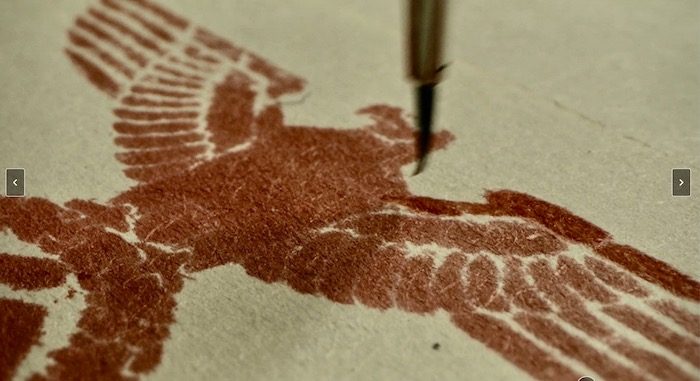“The Forger”: Food in WWII Berlin – and Now
(Gerry Furth-Sides, photos courtesy KINO LORBER, © German National Tourist Board (GNTB)) Survival is the theme of The Forger in dank, dreary 1943 Berlin under Nazi rule. Let’s take a look at the key themes of food and dining, and then update it.
Here we start with Writer-director Maggie Peren masterfully dropping you down a slide into sinister, dreary Berlin to tell the true story of Jewish meek-turned-brazen “forger” Cioma Schönhaus. It is arguably the best depiction of civilian life in wartime Berlin ever put on film.
Where The Third Man welcomes you into a theatrically lit post-war Berlin story from an American point of view, Peren drops you off a rickedty tram to fend for yourself along with Cioma, played by engaging Louis Hofmann, as lean, blonde and chiseled as any Aryan.
Cioma’s family has already been deported and he scrapes by using questionable papers, barely holding down a mind-numbing civilian job in a munitions factory because of his negligent behavior. His reckless ways also almost blows a chance to use his innate artistic skills to forge identification documents, which ultimately help smuggle 30Jews out of the country. Food ration pay is his undisguised motive.
Peren’s inspired production team of Designers Philipp Eggert and Eva Stiebler, art directors Marc Ridremont and Stiebler squeeze every bit of color and warmth out of rooms, stark or opulent. Cinematographer Christian Stangassinger and editor Robert Sterna make every agonizingly minute suspenseful even knowing the positive ending.
The film also lends itself to comparison with Steven Spielberg’s winsome forgery tale, Catch Me if You Can. Here our hero had troubling psychological reasons for his forgeries, yet gaily led an adventurous life as an impersonator, a ride we enjoyed with him. Not here. The restaurant cavalier Cioma treats his temporary girlfriend to with his rations is as dour, impersonal, vast and bleak inside as Berlin is outside of it.
Frank Abagnale “borrowed” airline pilot uniforms for his holidays. Cioma had a borrowed German soldier’s uniform to dine in a nightclub, using unconvincing, irrational tactics with other officers that did not work. He had the same careless, irresponsible attitude when inviting young girls trading black market goods into his apartment, only to have the no-nonsense landlady throw them out – and him, too.
We breath a sigh of relief to read the credits and see he made it out of Germany on a bike to Switzerland and lived to the age of 93 with family and art job. This is where Perens met him.



 Gerry Furth-Sides
Gerry Furth-Sides  Barbara Hansen
Barbara Hansen  Chef-owner Alain Cohen
Chef-owner Alain Cohen  Roberta Deen
Roberta Deen  Jose Martinez
Jose Martinez  Nivedita Basu
Nivedita Basu